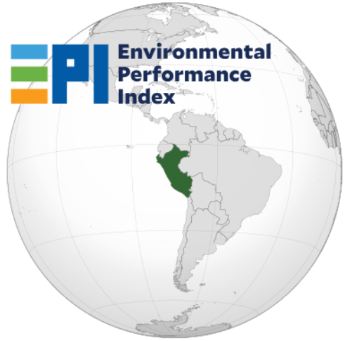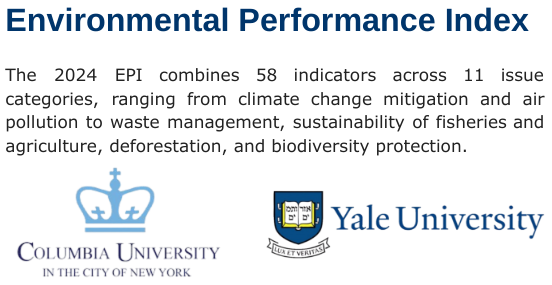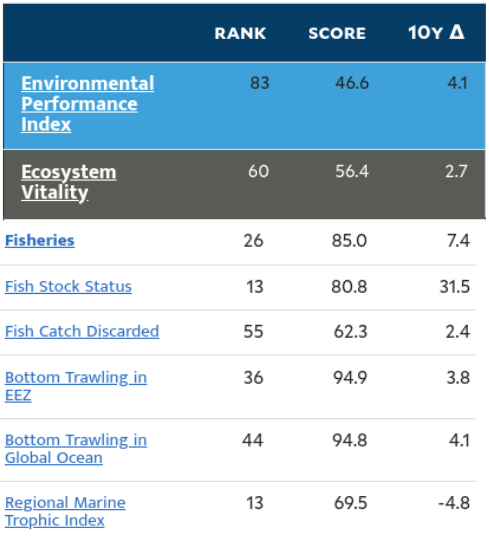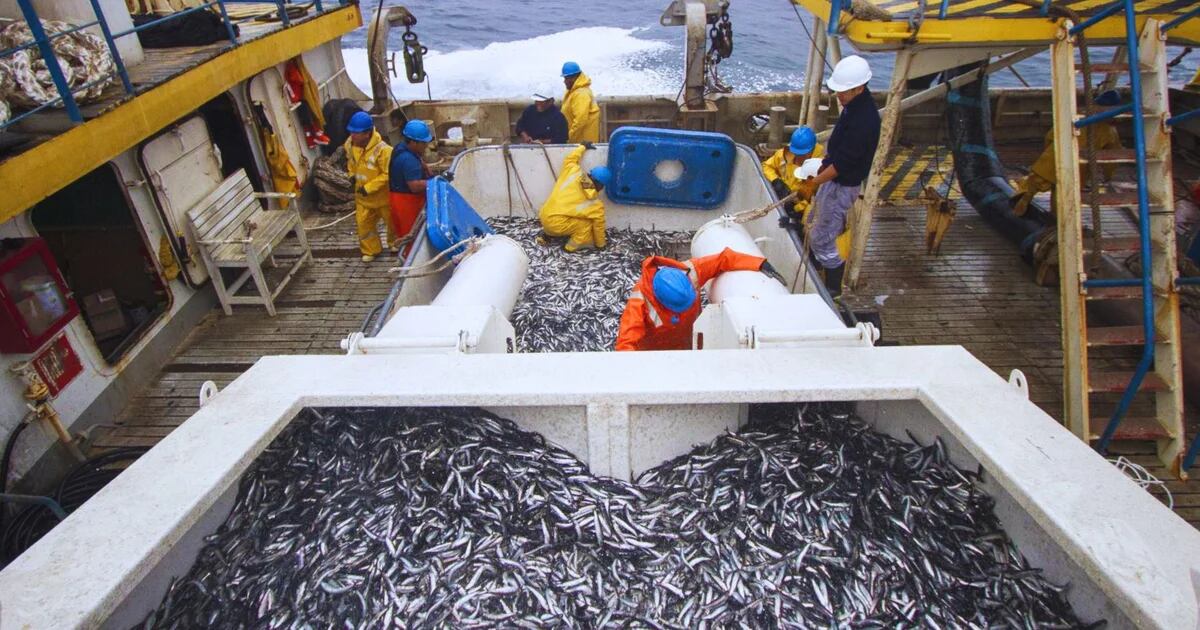|

EPI indicators provide a way to spot problems, set targets, track trends, understand outcomes, and identify best policy practices.
The fishing sector in Peru recorded the best performance in South America in May
 PERU
PERU
Tuesday, August 13, 2024, 07:00 (GMT + 9)
The success responds to its sustainability, which is coordinated work between the public and private sectors, states the SNP.
The sustainability of Peruvian fishing is the result of the coordinated work of the public and private sectors, which is recognized by international entities and prestigious universities abroad, said the National Fisheries Society of Peru (SNP).
 Peru FIS Seafood Media.png) “This recognition is the result of the coordinated work evidenced in recent years between the private sector, the Ministry of Production (Produce), and the Peruvian Sea Institute (Imarpe)", said the president of the SNP, Eduardo Ferreyros, to the Andina Agency. “This recognition is the result of the coordinated work evidenced in recent years between the private sector, the Ministry of Production (Produce), and the Peruvian Sea Institute (Imarpe)", said the president of the SNP, Eduardo Ferreyros, to the Andina Agency.
“We are the main stakeholders in protecting marine resources. Without these resources, no industry is possible. And without industry, there is no employment,” he added.
It should be noted that last week, Peruvian fishing recorded the best performance in South America thanks to its sustainability in the anchovy population, according to the 2024 Environmental Performance Index (EPI), prepared by American universities. from Yale and Columbia.
“These findings, carried out by two world-renowned universities, confirm that the fishing industry in Peru is perfectly sustainable,” said Eduardo Ferreyros.
“Precisely, the anchovy population, which is our main resource, has remained stable,” he added.

The 2024 Environmental Performance Index indicated that Peru is the best-performing country in South America and prevails among the world's large fishing nations, so its success is largely due to the sustainable management of its anchovy population.
The study indicated that anchovy, used mainly to make fishmeal, represents 84.5% of the catches in Peruvian waters.
FISHING GROWS 329.16% IN MAY
According to the latest report from the National Institute of Statistics and Informatics of Peru (INEI), the Fishing sector grew 329.16% in May of this year, due to the greater extraction of species of maritime origin (451.16%) for indirect human consumption (anchovy resource for fishmeal and fish oil).

.png)
MEASURES IMPLEMENTED
The study by American universities highlighted the measures implemented by the Peruvian State to preserve the sustainability of the anchovy population.
“In 2009, the Peruvian government implemented a bold policy change to improve the sustainability of its anchovy fishery, such as adopting a rights-based approach that allocated fishing quotas to several companies and even dismantling about a quarter of the Peruvian fishing fleet,” he noted.
“Today, the anchovy fishery is managed sustainably and its population has recovered, although it is threatened by warming ocean temperatures,” he added.


The 2024 Environmental Performance Index argued that countries lagging behind in fisheries management can learn lessons from their peers with large industrial fishing capacities, such as Peru.
“Eliminating the use of bottom trawling while meeting the growing demand for seafood requires a rapid expansion of more sustainable approaches to seafood production, such as aquaculture and the transition to marine capture methods.” on a small scale,” he explained.
“For example, between 2005 and 2015, when Peru was trying to save the dwindling anchovy population, the number of artisanal fishermen increased by 52.7% and the artisanal fleet by 14%,” he highlighted.
Last week, Peru ratified before the Food and Agriculture Organization of the United Nations (FAO), its commitment to fishing and aquaculture, valuing said multilateral organization as a key platform to promote sustainable management of fishery resources and aquaculture globally.

ON THE GLOBAL LEVEL
According to information from the FAO, the largest fish producers are China, India, Peru, Indonesia, the United States, Russia and Vietnam, which together represent almost 60% of global fishery and aquaculture production.
The FAO recently highlighted that Latin America and the Caribbean is the second aquaculture producing region in the world after Asia, and that Peru stands out worldwide in capture fishing.
The report 'The state of world fisheries and aquaculture' (SOFIA, in English), pointed out that Peru is the only one in Latin America that appears among the top 10 worldwide, as it contributes 5.8% of global production. of captured aquatic animals, only surpassed by China (14.3%), Indonesia (8%) and India (6%).
Source: Agencia Andina/americaeconomia.com
editorial@seafood.media
www.seafood.media
|



